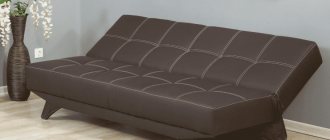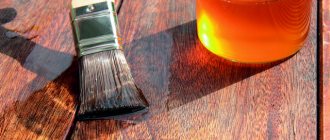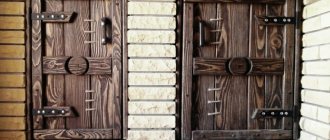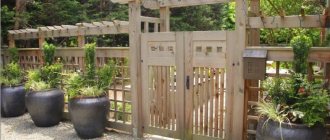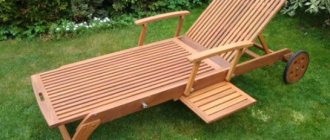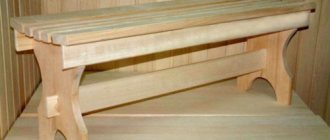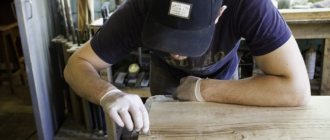Nail polish removal methods
It must be said right away that only the most popular surface cleaning methods are covered here. There is no universal recipe that is applicable in all situations.
The choice of method depends on many variables, including:
- The type of base is of considerable importance, since it makes a difference what exactly needs to be cleaned - furniture or parquet.
- Varnish composition. Different options are relevant for different compositions.
- Layer thickness. It's one thing to remove one layer, quite another to remove many old layers.
How to varnish interior wooden doors in a house?
Before you paint a wooden door with stain and varnish, you need to select the material. On the market you can find many types of products that differ in their basis:
- alkyds have a yellowish tint. The main component is the solvent. Among the advantages are strength, water resistance and quick drying (less than a day). The disadvantages include an unpleasant odor when painting and fading in the sun;
- nitro varnishes are colorless and retain the natural color of the wood. The main components are acetone and nitrogen compounds. The advantages include low cost, durability and strength. Disadvantages are flammability and toxic substances;
- polyurethane ones darken the color of the wood. The main components are polymers with long molecules. The advantages are low toxicity and absence of unpleasant odor. Among the disadvantages, the need for a brightening primer should be highlighted;
- acrylic ones are made on a water basis. Used to restore things in residential areas. The advantages are resistance to ultraviolet radiation and does not crack during use. The disadvantages are long drying time and low abrasion resistance.
Treatment with chemical compounds
Treating wooden surfaces with chemicals (also called stripping) is one of the most popular methods of removing varnish when it comes to delicate surfaces of furniture or other delicate objects. The chemical compositions can be powders, gels, specialized liquids or a regular solvent.
The choice of a specific option depends on the task at hand. When it comes to shellac, denatured alcohol is best. Liquids are most applicable to surfaces where there are not many layers - up to three. The fact is that the liquid tends to erode quickly, which is why it is simply not able to absorb deeply enough. Powder chemistry is the best choice for large-scale work, since such materials can be preserved for a long time. But gels and paste-like materials are best suited for removing a significant number of layers of varnish or paint.
Denatured alcohol is best for removing shellac.
Recommendation: powders are created in this consistency for ease of storage and transportation. They should be used diluted with water to form a thick paste-like mass.
It is best to apply the mixture in a vertical position. This is not only more correct from a technological point of view, but also more convenient. Gels and pastes can remove up to a dozen layers of old coating at a time.
What influences the choice of method
There is no one universal method that will suit every situation. In each individual case, the best option will depend on various factors. When choosing a method for removing varnish from wood, you need to consider the following nuances:
- what is the thickness of the varnish layer? If the varnish is applied in five layers or more, then you will have to spend a lot of time;
- what composition of paint and varnish material was applied to the wooden surface;
- what type of base should you remove the old layer of varnish from? The choice of a specific method will largely depend on what surface needs to be cleaned of varnish, for example, furniture or parquet flooring.
Instructions for removing varnish from a wooden surface
The entire coating removal process consists of four stages.
First stage: applying wash
We wet the brushes in the chemical composition and apply a decent layer to the surface. We proceed from the rule that the brush should be passed over one place only once, without repetition.
Second stage: film
To enhance the washing effect, we organize a compress, for which we cover the surface to be treated with a polyethylene film. The average waiting time for the effect of a compress is from 1 to 4 hours, depending on how many layers are to be removed. A good sign is if the remover changes color and becomes dark brown or brownish, and the varnish begins to swell.
Third stage: removing varnish
After the varnish has become softer, it must be removed with a spatula. The edges of the new spatula are too sharp. Therefore, it is recommended to round them slightly using a sharpening stone. This will make working with wood more accurate.
The pressure on the swollen material must be careful. You probably won't be able to completely get rid of the varnish in one go. Then you need to repeat the operation again. However, it happens that one pass with sandpaper is enough to remove the remaining varnish film.
Fourth stage: neutralization of the chemical composition
Do not forget that the chemical composition remaining on the wooden surface must be washed off either with plain water or with vinegar solution (500 grams of water per 100 ml of vinegar). You need to wash off the remaining chemicals thoroughly, but not for too long, since moisture is harmful to wood, and the surface being treated at this time is deprived of protection. As soon as the washing is completed, the surface should be wiped well, and then the item should be moved to a dry and ventilated place. Moreover, direct rays of the Sun should be avoided. After drying, the wooden product can be re-varnished.
The chemical composition remaining on the wooden surface can be washed off with plain water or vinegar solution
In addition to liquids, spray cans are also used. As a result of spraying the spray, a foam layer appears on the surface being treated. Sprays are easy to use, however, their disadvantage is the ability to wash off only minor layers.
Important! Work with chemical compounds must be carried out in compliance with safety rules. The room must be well ventilated. For protection you need to use special gloves and respirators.
Acetone is also used as a solvent. First of all, a fabric compress is made, thoroughly soaked in acetone. Then the compress is applied to the areas intended for cleaning. Cover the compress with plastic wrap and wait 10-15 minutes.
Note! Removing the varnish layer on furniture or chipboard panels can damage the surfaces, as the decorative film can be damaged. The best material for removing varnish is natural wood.
Let's make it old
Today, deliberately rough wooden furniture in a rustic (village) style is in fashion. So a FORUMHOUSE Kostorama participant decided to transform a shabby but good-quality tabletop made of laminated pine lumber with the help of brushes and paints. The forum member sanded the table and covered it with two layers of dark brown acrylic paints - to achieve a variety of colors, Kostorama mixed paints of several shades. Then, with a medium-thick brush, the woman drew stripes, applied additional dark and light tones, imitating the texture of old wood, and varnished in two layers. Here's what we ended up with:
The fact that knots and veins on a tree are just a pattern, according to Kostorama, is noticeable only up close. You can make furniture look old and give it an antique look by artificially aging the wood in another, more complex way. To begin with, the wooden surface must be brushed - that is, give it a relief characteristic of old wood. Forum member Aib suggests performing this operation using metal drill bits. In his opinion, a brush with a diameter of 60-70 mm and a thickness of no more than 1 cm, as well as a larger one with a diameter of 120-150 mm and a thickness of 15-20 mm, are best suited.
The surface is processed at high speeds according to the growth of fibers. It turns out beautifully if no more than 5-10% of the area along the board is processed, first with a small nozzle, and then, along the same grooves, with a wider one to smooth out the pits.
After giving the relief, the wood is covered with the first layer of stain and sanded with sandpaper. Then - a second layer of stain, and sanding again, if desired, you can repeat it again. You can learn more about artificial aging of wood from this material.
You will find other interesting examples of furniture remodeling and repair by our forum members in this thread. For experience in antique restoration, come here. We also recommend watching our video about furniture restoration.
Mechanical cleaning
The essence of the technique is surface scraping. In other words, this is stripping off the varnish layer using a construction tool - a tsikli, which is a sharpened steel plate with a handle. Moreover, the handle is at an angle to increase pressure on the surface. You can purchase a cycle or make it yourself.
You can remove varnish from a wooden surface using a scraper.
You can do without a special tool by using glass. But this device has a drawback - it quickly becomes dull. If you choose glass, you need to remember to use protective gloves to avoid getting hurt.
If the varnish layer is thin, you can use regular sandpaper. Moreover, it can be used either manually or by attaching sandpaper to an angle grinder. There are three types of grinding machines:
- tape;
- vibration;
- eccentric.
Vibrating machines are the most affordable. This tool can be used to clean furniture.
The working process is as follows: sandpaper is installed on the “sole”, which is used to process the surface. This method of removing varnish is very dusty, but compared to manual processing, this option will give a much more aesthetic surface.
Advice! Don't forget to protect your surroundings from dust. Plastic film will do for this.
The main advantage of mechanical processing compared to chemicals is that toxic and unpleasant-smelling substances are not used. In addition, if you work carefully, this method of cleaning is more gentle on the wood than in the case of chemical compounds. Mechanics have one drawback - the process is long and labor-intensive.
The main disadvantage of mechanical processing is that the process takes a lot of time and effort.
Advice! Since mechanical cleaning takes a lot of time and also requires accuracy, it may be more rational to use the services of a hired specialist. In addition, the specialist is equipped with professional equipment, which will improve the quality of work.
Restore furniture surface: a quick way
Having completed the job of removing old paint from furniture or doors, we often, unfortunately, discover that there is nothing good underneath - just putty and potholed wood. And now there is only more work to do with such a surface before applying new paint!
But you can use a quick way to restore the paint coating. To do this, follow the following instructions:
- To restore the surface of furniture, remove paint only in those places where it has peeled off using a metal spatula.
- Sand the surface of the product covered with old paint using a sanding machine, using first medium-grit sandpaper, then fine-grit sandpaper. Don't try to remove the paint, just smooth it out. If necessary, sand the entire surface of the product using the old paint, leveling and removing defects (for example, smudges and drops of old paint).
- Fill all cleaned areas using wood putty. The drying time for the putty is recommended by the manufacturer.
- After the putty has dried, sand the surface again - manually or using a sander.
- After this, wipe the product from dust and repaint the entire surface in two or three layers.
The surface prepared in this way can be repainted in any color, using the old coating as a primer.
When sanding, be sure to wear a mask to protect you from dust. Only work with chemical solvents outdoors or in a well-ventilated area and be sure to wear rubber gloves. Follow manufacturers' instructions regarding use, storage and disposal of solvent.
If your home is not the Hermitage, and the furniture is just an old shelf or bedside table, use this easy way to restore the paint finish.
Heat treatment
The essence of this process is to heat the wooden surface, due to which the varnish adheres less firmly to the surface. In other words, the varnish begins to crack, after which it can be pryed off with a tool (a chisel or spatula will do) and slowly removed.
Please pay attention to the following nuances:
- During work, you need to use protective equipment (gloves and goggles), and also ventilate the room. The fact is that when heated, the varnish releases toxic substances, and when the material is mechanically separated, pieces can bounce off of it. Also, do not forget about fire safety.
- If the varnish is heated up, but does not peel off, but becomes charred, you need to change the cleaning method and you cannot do without chemicals.
Required tools:
- Gasoline or gas burner. Such devices are quite inexpensive. However, the burner must be used with extreme caution, as the work will be carried out with an open flame.
Care must be taken when working with the burner - Construction hairdryer. The device is similar to a household hair dryer, but has significantly greater temperature capabilities, heating up to 600 degrees.
Note! A standard household hair dryer is not suitable for removing nail polish.
The main advantage of the thermal method is its high speed. However, we must not forget about the danger of overheating the varnished surface, since in this case it may catch fire.
The work is done with both hands: one holds the hairdryer, which heats the surface, and the second holds a spatula for removing nail polish.
Choosing a tool for removing varnish
Before you start removing paint and varnish from the wooden surface of furniture, you should stock up on the necessary tools, which will vary depending on the method you choose.
The entire list of tools required for the procedure:
- sandpaper for sanding;
- sandpaper;
- latex gloves;
- glasses;
- special chemical composition for washing;
- respirator and mask for protection;
- brush;
- soft sponge;
- hard metal brush;
- blowtorch;
- hair dryer used in construction;
- polyethylene film.
Advantages and features of using varnish
We coat the door with varnish
In addition to the fact that varnish allows you to give the door a spectacular look, it also has a huge number of protective functions that are so necessary for the door leaf. Thanks to various types of varnish, you can completely change the appearance of the solid wood and give ordinary pine the appearance of a valuable type of wood. Varnishing also allows you to emphasize the shade that the door leaf has and give some of its details a deep and rich color.
Important! Many people confuse the concepts of impregnations for wooden surfaces and protective coatings. If the former serve to protect the material from mold and rot, then the latter protect the wood from the external negative effects of water, sun and sudden temperature changes.
For myself, I found out the following advantages that allow you to varnish the door yourself:
- Varnish is an affordable material - everyone can choose the appropriate mixture based on the pricing policy. But here we should not forget that only a high-quality mixture can improve the protective and external properties of the door and at the same time extend its service life. Therefore, such protection will not cost a penny.
- Simple application - even a beginner who has no previous experience in carrying out such events can coat surfaces with varnish
- Versatility - the material is used for various surfaces, in addition, it can be used as a fixing for decoupage and painting
- The protective functions that varnish has increase the resistance of a wooden door to various negative influences. This can include mechanical damage, scratches, moisture and ultraviolet light.
As it turns out, there are plenty of varieties of varnish, but they are all divided by composition. There are such as:
- Oil varnish - as is already clear, the main component is oils, which, when absorbed into the surface, can change its color. They can be used as a solvent, they take a long time to dry and most often have an unpleasant odor
- Water-based - popular nowadays because they are colorless, have no strong odors and can be either completely matte or glossy. Has a short drying time, but the door leaf requires preliminary application of stain
Facilities
There are three main ways to remove varnish.
- Using chemical compounds
- Mechanical impact
- Heating to high temperature
Each of them has its pros and cons. This is not to say that there is a universal solution. For each specific case, a different method of cleaning the surface is selected. The choice depends on the composition of the varnish with which the wooden surface was coated and on the thickness of the layer. The type of wood base is also important, for example, different methods are used to treat wood floors and wood chairs.
Chemical compositions
Another name for removing varnish using chemicals is stripping. This is the most common method for processing small areas of wood. Used for furniture, figurines and other products where the varnish layer is quite thin, and its removal must be delicate.
There are three types of chemicals designed to remove old varnish from wood.
- Liquid. Used if a thin layer of varnish is applied to the product. Liquid is a substance that quickly evaporates from the surface. thus, it can only be absorbed into the very top layer of varnish, but does not penetrate deeper. If you use liquid products on furniture that has more than three coats of varnish on it, it may not work.
- Spray. The main advantage is ease of use. The product is sold in a can; you simply spray it onto the surface you want to clean. In this case, the substance is converted into foam, which is actively absorbed into the varnished surface and corrodes it. On the other hand, a spray can only remove a few thin layers, so it is only effective on delicate items.
- Gel or paste. They are used when it is necessary to treat a large area, for example, a parquet floor. Suitable for removing thick layers of varnish and can even be used for paint.
- Powder. The properties of the powder composition are identical to gels. The fact is that before use, the powder must be diluted with water to a paste. And in bulk form, the product is made only for ease of storage and transportation. Thus, if you have large-scale work ahead that requires a lot of chemicals, powder will be the best solution.
Thanks to the gel or paste obtained from the powder, you can remove ten layers of varnish in one application.
Follow the safety precautions indicated on the product packaging!
Mechanically
This option involves scraping, that is, you will need to literally tear off the varnish layer. Several types of devices are used for this.
- Cycle. It is a pointed metal plate with a comfortable handle. Thanks to its special structure, it provides a strong impact on the surface. This means work efficiency increases.
- If there is no cycle, ordinary glass will do. However, there are two disadvantages here. Firstly, the glass should be constantly replaced, as it quickly becomes dull. Secondly, you can only work with gloves.
- Sandpaper. Used when you need to remove a thin layer of varnish from a small product. A very small thing can be processed by hand. If it is a piece of furniture, such as an old chest of drawers or a cabinet, then you can use a sander.
Any of the selected mechanical processing methods is very dirty and dusty. This is especially noticeable if you use a sander. But there are many more advantages here. Firstly, you won’t have to breathe in chemicals, the odor of which can remain on the wood product even longer. Secondly, this method is much better for the tree itself.
If you need to remove varnish from a large area of the floor, it is better to call professional repairmen with special equipment and skills to carry out the work.
How to quickly remove nail polish using a thermal method
This is truly the fastest way to remove polish. But it requires a certain skill and dexterity. The varnished surface heats up to such an extent that it begins to swell and slowly fall off. At this point, it must be pryed off with a spatula and removed.
You can use a burner or a professional hair dryer to heat the varnish. The burner will allow you to melt the varnish faster, but its use is considered dangerous, because the work is carried out with an open fire. If overheated, a wooden surface may well catch fire.
Using a hair dryer is preferable. But such equipment costs much more than a conventional gas burner. Do not confuse a construction hair dryer with a household hair dryer. A household hair dryer will never be able to heat up to such a temperature as to melt the varnish. A hair dryer heats the air to such an extent that the varnish cracks and comes off the wood quite quickly.
Heating should be carried out in a ventilated area - during heat treatment, the varnish releases toxic substances into the air.


